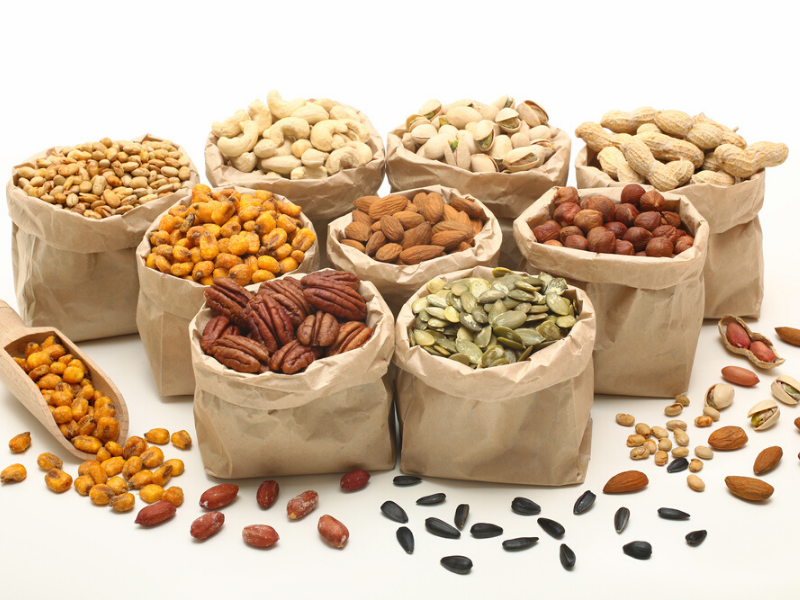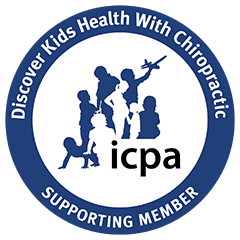Research is revealing there’s more to the nutritional story of nuts and seeds. Absolutely, they are high in fat. But it’s the good fat, not the bad, and when eaten in moderation, their health benefits far outweigh the dangers of their fat content. The fact is, the more we learn about nuts and seeds the more we realize that they’re one of our best snack food options.
Isn’t Fat Bad?
We know that nuts and seeds are high in fat. An ounce of almonds and sunflower seeds both have 14 grams, cashews have 13 and pecans have a total fat count of 20 grams. It’s when we consider what kind of fat they contain that we see the difference between these and other foods with a high total fat count.
Saturated fats are those that raise our bad cholesterol levels and increase our risk of heart disease and strokes. These are the fats that are high in most common snack items and put our health at risk. An ounce of almonds contains 1 gram of saturated fats, and cashews and pecans have 3 and 2 grams respectively.
Where nuts and seeds are high in fat is in the mono and polyunsaturated fats, and these are good for us, raising our “good cholesterol” levels and typically containing essential vitamins like A, D, E and K.
The Facts
In 2013, a study published in the journal BMC Medicine determined that those who eat nuts more than 3 times per week have a reduced risk of dying from cancer or cardiovascular disease. Overall, nut eaters had a 39% lower mortality risk and walnut eaters were 45% lower. The results also showed that there are lower risks of type 2 diabetes among those who regularly snack on nuts and seeds.
A 2017 study out of Harvard analyzed data from over 210,000 health professionals over 32 years found that compared with those who never or almost never ate nuts, people who ate one ounce of nuts five or more times per week had a 14% lower risk of cardiovascular disease and a 20% lower risk of coronary heart disease.
Another study found that nut consumption may help lower the risk of cardiovascular disease among people with type 2. Researchers found that those who ate five 1-ounce servings of nuts per week had a 17% lower risk of cardiovascular disease, a 20% lower risk of coronary heart disease, a 34% lower risk of cardiovascular disease death, and a 31% reduced risk of all-cause premature death.
Additionally, since the study’s 16,217 participants were asked about nut consumption both before and after they were diagnosed with type 2 diabetes, researchers also found that those who increased their intake after diagnosis had an 11% lower risk of cardiovascular disease, a 15% lower risk of coronary heart disease, a 25% lower risk of cardiovascular disease death, and a 27% percent lower risk of all-cause premature death.
Finally, studies published in the Journal of Nutrition and Medline have found that seeds (flax seed in particular), are high in omega-3 which have proven benefits in the fight against heart disease, stroke and many other circulatory diseases.
The Good and the Bad
When it comes to all foods, too much of a good thing can still end up being a bad thing, that’s why moderation is key. The options for eating good nuts and seeds are limitless, and the vitamins and minerals provided equally various.
A typical serving of nuts (1 ounce) generally will contain between 160 to 200 calories and 13 to 20 grams of fat, but it’s monounsaturated and polyunsaturated fats that make up the majority. When compared to potato chips, pastries and other typical “snack food” items with equal fat content, the difference lies in the nutritional value of the item as a whole.
Most nuts and seeds are rich in fiber, phytonutrients and antioxidants such as Vitamin E and selenium as well as sterols and omega-3.
Even though it is not one, the peanut is still referred to as the world’s most widely consumed nut. Since it is actually a legume and a relative to lentils and garbanzo beans, it is a starch and not as nutritious as actual nuts. An additional concern is it’s a very common food allergen. Generally, this is the one “nut” to avoid.
Nutritional Value
Sunflower seeds provide the most potent combination of vitamins and minerals of any common nut or seed. A one- ounce serving, which is about 2 tablespoons of seeds, contains more than 30% of the daily value of six vitamins and minerals, including Vitamin E, phosphorous, selenium and manganese.
Pumpkin seeds are an equally healthful choice with 1⁄4-cup of kernels boasting more than twice the omega-3s of a four-ounce serving of salmon. While flaxseed has long been recognized as a very popular health food, the Chia seed is now being recognized for its merits. Both seeds are rich in essential fatty acids like omega-3 and 6.
Nuts are an excellent source of vitamins and minerals, with 1 ounce of Brazil nuts containing 780% of the recommended daily intake of selenium, and walnuts providing the most omega-3 fatty acids of any common nut. Almonds are a wonderful source of copper, magnesium and phosphorus, and 6 grams of protein per 1-ounce serving.
How to Snack Healthy
Nuts and seeds are definitely one of nature’s best snack foods and they can be enjoyed in a variety of ways; of course, the best way is always going to be a small hand- ful a day. The typical serving of a nut or seed is going to be one-ounce or just enough to fill the palm of your hand. Remember not to snack right out of the bag, as you may not realize how many you’ve eaten until you’ve eaten too many.
Nuts and seeds are a wonderful crunchy addition to a green salad. Sunflower seeds are common, but slivered almonds are equally good. They can also be added to steamed vegetables or an entrée.
Ground flaxseed can be mixed with cinnamon and used as a dip for fruit, such as apples, or it can be sprinkled over berries. It can also be added to salad dressing or sprinkled on cooked vegetables and have little affect on the taste.
Roasted nuts from a can are typically going to have additives that may counteract some of the good you’re doing by choosing a healthy snack. So, if you prefer your nuts and seeds roasted, do it yourself.
This can be done by spreading a single layer of nuts or seeds in a baking dish or sheet and then lightly coating them with coconut or olive oil. This will help the nuts or seeds brown while roasting. Put them in the oven for about 5 to 10 minutes. Do not leave them in the oven for too long as they do have a high fat content and will continue to cook for a bit after being removed from the oven.
In Summary
The worst thing we can do is reach for junk foods when we need a snack. Nuts and seeds are a convenient and healthy snack food that have been proven to take the edge off our hunger without the added carbohydrates and sugar of most other snack food options.
Nuts are not a safe snack food for most children under 5 as they may present a choking hazard. However, many grocery stores are beginning to stock almond, maca- damia, pistachio, cashew and even sunflower seed butters, a healthy alternative to peanut butter.
Additionally, almond milk is now available as a great substitute for cow’s milk. While cow’s milk is high in saturated fat and a proven food allergen, almond milk is neither of these things. Typically sweetened using dates instead of sugar or sugar cane, almond milk is a healthier substitute than even soy milk.
To learn more about the benefits of chiropractic care and the benefits of making it part of your family’s wellness lifestyle click below to schedule a complimentary consultation with Dr. Elyssa today.



